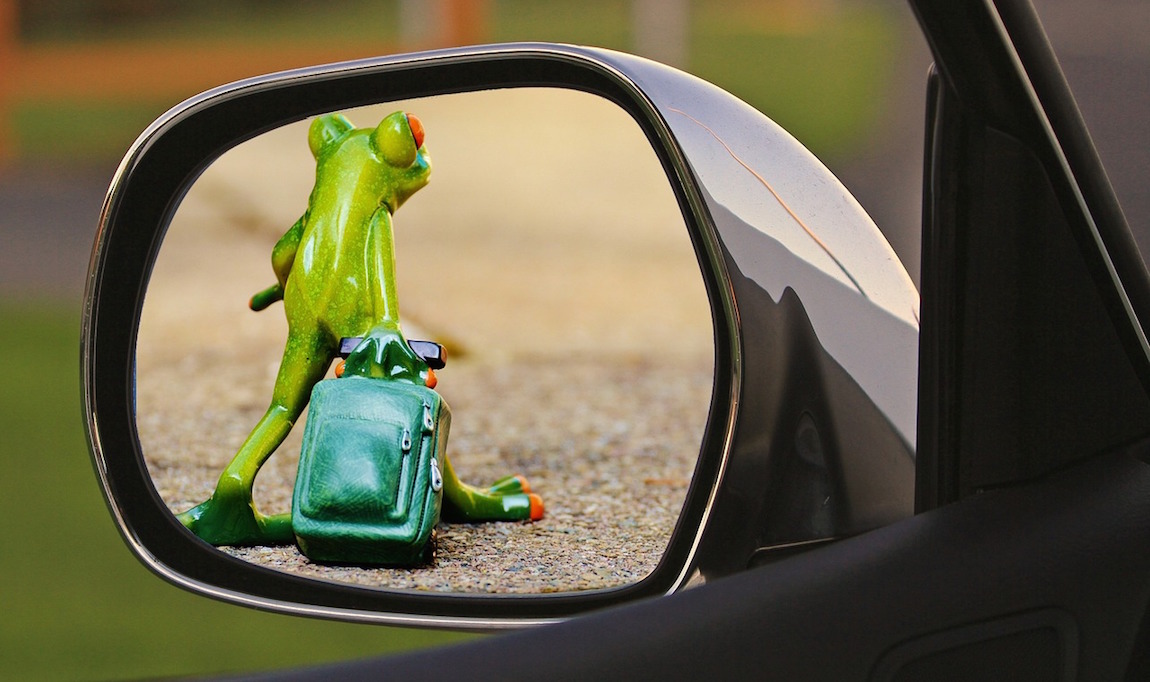B2B Monday Myth: All B2B Audiences Are the Same
by MGB2B
The Myth: All B2B Audiences Are the Same.
The Truth: Not All Audiences Are Created Equal, and You Need to Personalize Your Content for Each One.
If you’re sending out one set of content to all audiences, you are missing out on a prime opportunity for engagement. Chances are, your company deals with more than one industry. Chances are even higher that many different people, with different roles and positions throughout the buying cycle, are all receiving your content. It is no surprise that people are more likely to respond to something of relevance to them. But there’s no way that every piece of content you send out resonates with each group. Over-simplifying your strategy or generalizing your content can deeply hamper your B2B marketing efforts. Personalizing B2B content may take time, but it’s well worth it.
Segmenting and personalizing can help you engage with each specific prospect, and increase the chance that they’ll develop into a higher quality lead. When developing or changing your strategy, keep these things in mind:
Know Your Segments
You must know who you are targeting before you can attempt to attract or engage them. Who are your subscribers, visitors, or followers? What has resonated with them in the past? Use the vast amount of data and analytics to see when your content is resonating with whom. Did one specific email get a large number of click-throughs from a a certain segment? Continue to pursue that. Testing your emails is a great way to gain these insights.
Core User Studies (sometimes referred to as Voice of Customer (VoC) Research) can also be helpful when attempting to capture the expectations and preferences of your various audiences. This market research technique gets down to the true wants and needs of your customers, and will allow your company to connect with them at many different stages of the buying cycle. Research can be time consuming, but the insights you get from it can change the entire direction of your marketing plan and make increase its effectiveness exponentially.
Approach Each Vertical Differently
As a B2B business, it is common to deal with a number of different industries. Each of your verticals has different interests and faces different challenges; it doesn’t make sense to talk to them as one collective whole. While some cross-industry pieces can be appealing, it is important to deliver content that addresses each vertical specifically. This is especially important when creating content or advertisements for trade publications, where niche B2B audiences tend to spend a lot of their time.
Keep Job Titles in Mind
There are many different people along the buying cycle, all who may be coming into contact with your company’s content. However, each person will have different concerns based on their role within the company. Think about it: a purchaser might be interested in finding a low-cost product, while an engineer is more worried about the quality. The CEO, on the other hand, is in charge of big picture thinking and long-term goals. Any of these three, and a host of others, could be reading your content. Be sure to change your message and propose a different call to action based on who you’re talking to.
Create Personas
One thing that will help you with everything created above is the creation of personas. You’ll likely have at least two, but it could be many more depending on how many verticals and job titles you have on your list. The more you know about those verticals and job titles the easier it will be for you to create personas. A persona is a fictional character who represents a buyer in one of your audience segments. Having a clear idea of who you are creating content for makes it easy to show how your company can provide them solutions. Here’s a guide for creating personas that will help fine-tune your content program and give it more direction.
While it may be easier to blanket all of your audiences with the same content, you need to drill down a little more for it to be effective. The relevance and quality of your content is what will make a lasting impression. Consistently delivering personalized content to your audiences will prove a successful strategy for cultivating meaningful B2B engagement. Invest the time in doing it right — it will be worth it in the long run.
Continue ReadingB2B Monday Myth: I Don’t Need to Test My Emails
by MGB2B
The Myth: I Don’t Need To Test My Emails
The Truth: A/B Testing Can Help You Turn Your Email Program Into a Lead-Converting Machine
You are likely among the 93% of B2B marketers who distribute content via email. But are you doing it right? If you’re not using A/B testing, there is likely room for improvement. A/B testing is one of the best ways to gain insights about your audiences, fine-tune your efforts over time, and increase open, click-through, and conversion rates.
It’s important to remember that when testing B2B emails, you can only test one thing at a time. If you do it all at once, you won’t know what caused your email to succeed. Or tank. And then you’ve lost a truly helpful tool.
Here are 5 different elements you should test to fine-tune your email program:
- Subject Line. This is the big one. This is what gets people to open your emails. Does a question perform better than a statement? Does your core target audience appreciate humor? Or do they prefer you to get right to the point? Subject line tests can help answer those questions and increase your open rates.
- Day of the Week/Time of Day. When you test this, do it when you’re not testing subject lines. Or any other elements. Send the exact same subject line, message, and layout to one half of your audience on Wednesday at 6am and the other half on Thursday at 6am (for example) to test day of the week. Then with an entirely different email, test Wednesday at 6am and Wednesday at noon, to determine time of day. This is something you’ll want to log and perfect over time. It’s not something you can determine with only one email blast.
- Message. You’ve already tested subject lines, but what about the message once people open your emails? Which headlines perform the best? Which calls to action are people clicking on? Each individual copy element can be tested. But again, only one element at a time. Testing too many copy elements at once won’t tell you what you need to know.
- Layout/Design. What happens when you change the order of your articles? The color of your calls to action? Each variant can change the outcome. Test each one until you find what works. Before you even begin testing, make sure that you are using responsive design. If your audience(s) can’t read your emails easily on their mobile phones, this will negatively affect your results, and your reporting on other testing elements will be skewed.
- Type of Content. If you have a newsletter-style email promoting many different types of content, what performs the best? Do you have a higher CTR when you drive the audience to an infographic? A white paper? A blog post? Determine which kind of content your audience craves most — you might find it varies by segment.
Testing B2B emails takes time and patience. But in the long run it will help you give your audience what they want and take your leads further down the sales funnel. Email is one of the most important tools in the B2B toolkit. Get it right, and you’ll be miles ahead of your competitors.
Continue ReadingB2B Monday Myth: Unsubscribes Are Bad
by MGB2B
The Myth: Unsubscribes Are Bad
The Truth: Unsubscribes Can Become One of Your Greatest Email Marketing Tools
You may look at the number of unsubscribes after you send out an email and do a victory dance because your unsubscribe rate is low. Or, you might fret over high unsubscribe rates. But the question is: Are Email Unsubscribes Bad? Not necessarily.
Contrary to popular belief, unsubscribes are not always bad news. When prospects opt out from your emails, it means you’ve cut people from your list with little to no interest in your product or service. And you did it without moving a muscle. This paints a clearer picture of which prospects are interested — and that will translate into higher conversion rates down the road.
Here Are 3 Silver Linings You Can Find In Your Unsubscribe List:
- You’ll Save Time and Money. There’s no glory in having 1,000,000 people on your email list if only a small percentage is engaging with your content or even interested in what you have to say. When people unsubscribe, it’s usually because they are uninterested and unlikely to convert, not because your campaign is flawed or off-base. This leads to a more condensed but higher-quality list, allowing you to increase the focus on your target audience. Homing in on interested prospects will save you time and money down the road, since you won’t be following up unnecessarily with cold leads.
- You Can Learn More About Your Target. When your list condenses, it allows you to get to know your target audience better. You can fine-tune your content and even rework products based on the feedback and behavior of this tighter, more interested audience. With more accurate information, your marketing team will be more successful with converting subscribers into lasting buyers.
- You Can Learn More About Your Email Practices. Look at unsubscribes as an opportunity to learn more about how you can improve your email practices by asking why they are unsubscribing. If you have a high unsubscribe rate and they tell you they feel bombarded by your emails, pull back a bit. If they are frustrated because your emails aren’t mobile-friendly, you’ll need to change your email design. High unsubscribe rates can happen for lots of reasons, so use unsubscribes as a tool to improve your email efforts.
You also don’t need to wait for people to unsubscribe to cull down your list. Interested in parting ways with uninterested readers? It might be time for some breakup emails. Check out these tips on how to write one. Saying goodbye can be hard, but sometimes it’s best for business.
Continue Reading

